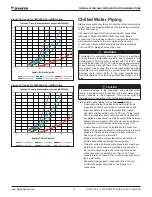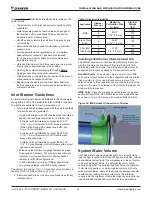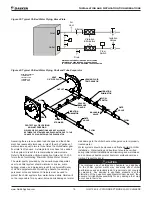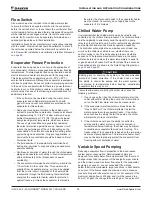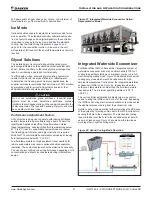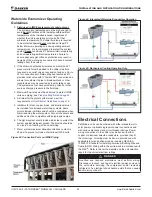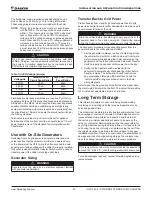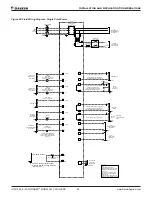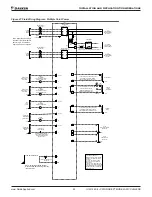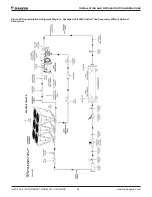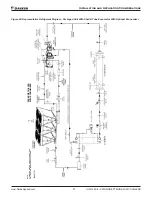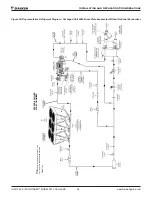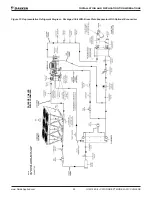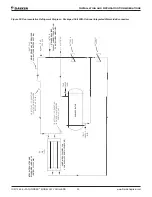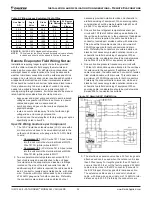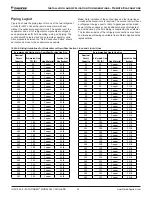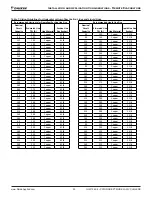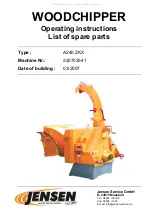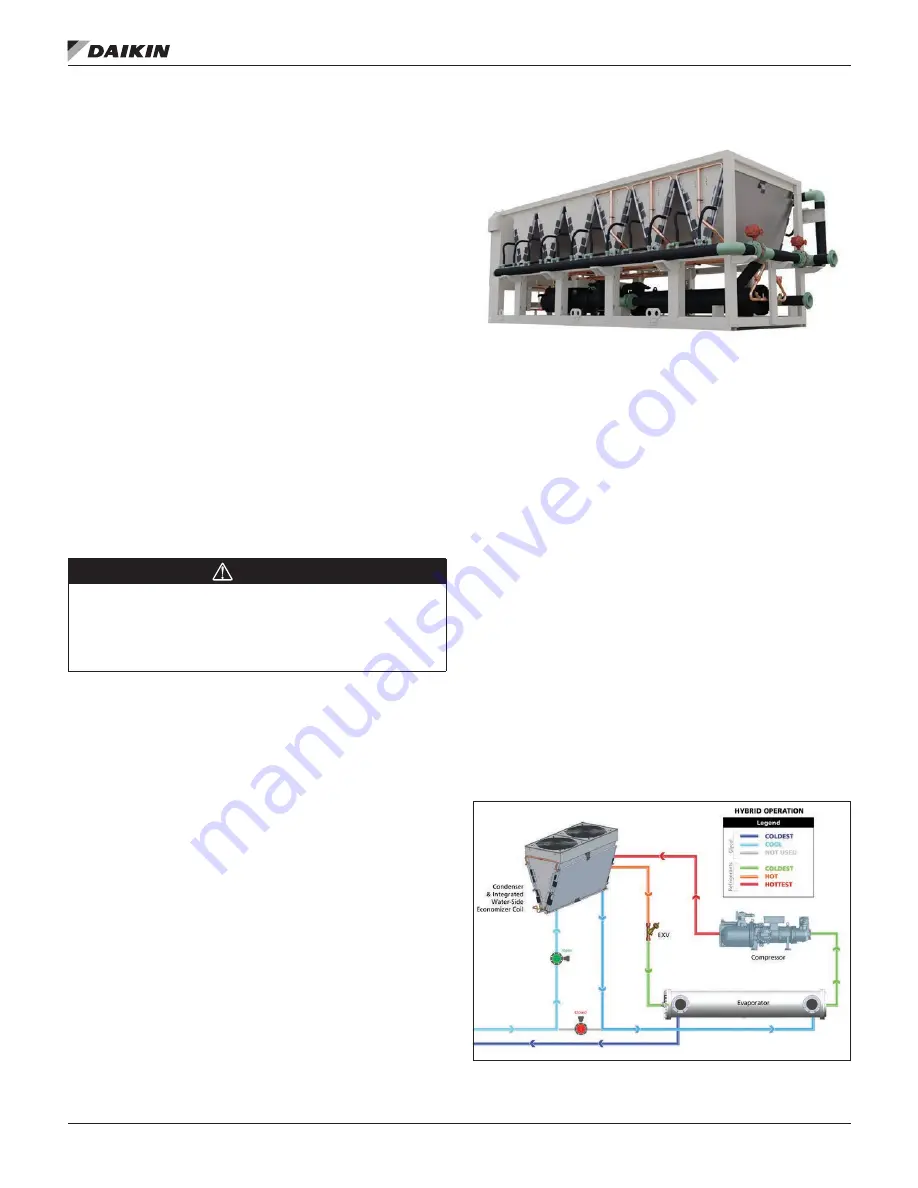
Installation and Application Considerations
www.DaikinApplied.com 21
IOM 1242-8 • PATHFINDER
®
MODEL AWV CHILLERS
200 gpm equals 20 gpm change per minute, or a minimum of
three minutes to go from maximum to desired flow.
Ice Mode
Optional double evaporator insulation is recommended for ice
mode operation. The standard controller software will require
“ice” set point changes and a digital signal into the controller
is required to change to the ice mode and back to standard
cooling. See the Field Wiring Diagrams on
page 24 and
for the connection location. In ice mode, the unit
will operate at full load until the shutoff temperature set point is
reached.
Glycol Solutions
The installed glycol level must align with the rated glycol
percentage indicated on the submitted chiller technical data
sheet. Failure to adhere to the rated glycol percentage may
result in unit damage and loss of unit warranty
Test fluid with a clean, accurate glycol solution hydrometer
(similar to that found in service stations) or refractometer
to determine the freezing point. On glycol applications, the
supplier normally recommends that a minimum of 25% solution
by weight be used for protection against corrosion or that
additional inhibitors should be employed.
CAUTION
Do not use automotive grade antifreeze. Industrial grade
glycols must be used. Automotive antifreeze contains
inhibitors that will cause plating on the copper tubes within the
chiller evaporator. The type and handling of glycol used must
be consistent with local codes.
Performance Adjustment Factors
AWV chillers are designed to operate with leaving antifreeze
solution temperatures per software range limits. Consult the
local Daikin Applied sales office for performance outside
these temperatures. Leaving chilled fluid temperatures below
40°F (4.4°C) result in evaporating temperatures at or below
the freezing point of water and a glycol solution is required.
MicroTech
®
III control inhibits compressor unloading at leaving
fluid temperatures below 25°F (-3.9°C).
Low fluid temperatures or high equipment room humidity for
remote evaporators may require optional double evaporator
insulation. The system designer should determine its necessity.
The use of glycol will reduce unit performance depending on its
concentration and should be considered during initial system
design.
Figure 41: Integrated Waterside Economizer Option -
Representative Model
Integrated Waterside Economizer
Pathfinder Model AWV chillers with an integrated system of
waterside economizer coils may be able to satisfy 100% of
cooling load without starting a compressor or may run in full
mechanical operating mode.
cooling only mode which would be necessary for high
ambient temperatures. Cooling from the integrated waterside
economizer (IWSE) coils,
outdoor air temperature is colder than the fluid temperature
requirements. The minimum operating ambient is -20°F
(-28.9°C).
The unit controller automatically adjusts two 2-way control
valves to bring the IWSE coils in or out of the loop. Bypassing
the IWSE coils during mechanical operation only mode avoids
the additional pressure drop from the economizer coils.
Hybrid cooling mode operation further maximizes the efficiency
of the system by rejecting some heat to the IWSE coils before
sending the fluid to the evaporator. The mechanical cooling
loop will further cool the fluid to the required setpoint but will
use much less energy.
shows how the two loops
work together in hybrid cooling mode.
Figure 42: Hybrid Cooling Mode Operation











